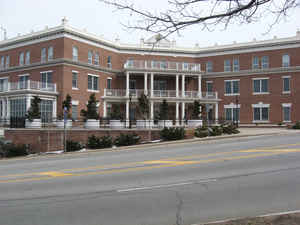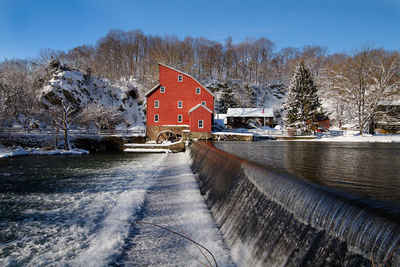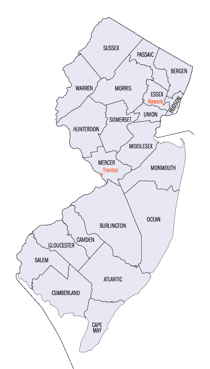New Jersey Counties
New Jersey has twenty-one counties. New Jersey's first counties were created as administrative districts within each province, with East Jersey split in 1675 into Bergen, Essex, Middlesex and Monmouth counties, while West Jersey's initial counties of Burlington and Salem date to 1681. The most recent county created in New Jersey was Union County, created in 1857.Sussex County, New Jersey
Sussex County Education, Geography, and History
Sussex County is the northernmost county in the State of New Jersey. Based on the 2010 census, the county had 149,265 residents.
The county was established in 1753 and named for the historic county of Sussex in England. Its county seat is Newton.
It is part of the New York City Metropolitan Area.
Etymology - Origin of Sussex County Name
Sussex is named for the English county of Sussex.
Demographics:
County QuickFacts: CensusBureau Quick Facts
Sussex County History
The area of Sussex County and its surrounding region was occupied for approximately 8,000-10,000 years by succeeding
cultures of indigenous peoples. At the time of European encounter, the Munsee Indians inhabited the region. The Munsee were a loosely
organized division of the Lenape (or Lenni Lenape), a Native American people also called "Delaware Indians" after their historic territory
along the Delaware River. The Lenape inhabited the mid-Atlantic coastal areas and inland along the Hudson and Delaware rivers. The Munsee
spoke a very distinct dialect of the Lenape and inhabited a region bounded by the Hudson River, the head waters of the Delaware River and the
Susquehanna River, and south to the Lehigh River and Conewago Creek. As a result of disruption following the French and Indian War (1756 - 1763)
the American Revolutionary War (1775 - 1783) and later Indian removals from the eastern United States, the main Lenape groups now live in
Ontario in Canada, and in Wisconsin and Oklahoma in the United States.
As early as 1690, Dutch and French Huguenot colonists from towns along the Hudson River Valley in New York began permanently settling in the
Upper Delaware Valley (known as the "Minisink"). The route these Dutch settlers had taken was the path of an old Indian trail and became the
route of the Old Mine Road and stretches of present-date US Route 209. These Dutch settlers penetrated the Minisink Valley and settled as
far south as the Delaware Water Gap, by 1731 this valley had been incorporated as Walpack Precinct. Throughout the 18th century, immigrants
from the Rheinland Palatinate in Germany and Switzerland fled religious wars and poverty to arrive in Philadelphia and New York City. Several
German families began leaving Philadelphia to settle along river valleys in Northwestern New Jersey and Pennsylvania's Lehigh Valley in the
1720s, spreading north into Sussex County in the 1740s and 1750s as additional German emigrants arrived. Also during this time, Scottish
settlers from Elizabethtown and Perth Amboy, and English settlers from these cities, Long Island, Connecticut and Massachusetts, came to New
Jersey and moved up the tributaries of the Passaic and Raritan rivers, settling in the eastern sections of present-day Sussex and Warren
counties.
By the 1750s, residents of this area began to petition colonial authorities for a new county to be formed; they complained of the
inconvenience of long travel to conduct business with the government and the courts. By this time, four large townships had been created in
this sparsely populated Northwestern region: Walpack Township (before 1731), Greenwich Township (before 1738), Hardwick Township (1750) and
Newtown Township (1751). On June 8, 1753, Sussex County was created from these four municipalities, which had been part of Morris County when
Morris stretched over all of northwestern New Jersey. Sussex County at this time encompassed present-day Sussex and Warren Counties and its
boundaries were drawn by the New York-New Jersey border to the north, the Delaware River to the west, and the Musconetcong River to the south
and east. After several decades of debate over where to hold the sessions of the county's courts, the state legislature eventually voted to
divide Sussex County in two, using a line drawn from the juncture of the Flat Brook and Delaware River in a southeasterly direction to the
Musconetcong River running through the Yellow Frame Presbyterian Church in present-day Fredon Township (then part of Hardwick). On November
20, 1824, Warren County was created from the southern territory of the Sussex County
Geography: Land and Water
Neighboring Counties
Bordering counties are as follows:
- Orange County, New York - to the northeast (along the boundary line between New York and New Jersey).
- Passaic County, New Jersey - to the east
- Morris County, New Jersey - to the east and south
- Warren County, New Jersey - to the southwest
- Monroe County, Pennsylvania - to the west (for a few hundred yards at the county's westernmost tip, Walpack Bend in the Delaware River)
- Pike County, Pennsylvania - to the northwest (along the Delaware River)
Education







